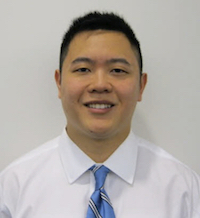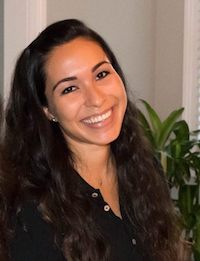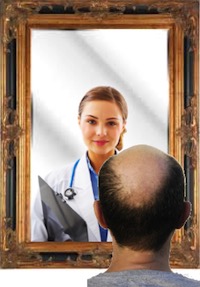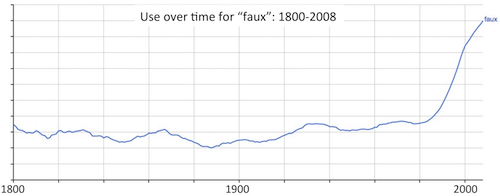
| Volume 26 Number 6 | Stony Brook, NY | < December 2016 > |
 |

|

We are pleased to welcome Dr. Joseph Gerald (Jerry) Reves as our Visiting Professor this month. Dr. Reves recently retired after a distinguished career in Cardiovascular Anesthesiology. He earned his medical degree from the Medical University of South Carolina and completed a medical internship and anesthesiology residency at University of Alabama Hospital and Clinics. Dr. Reves obtained an MS in Physiology and Biophysics from the University of Alabama at Birmingham. He followed this with a postdoctoral research fellowship. Dr. Reves was a clinical instructor of anesthesiology at several institutions including the National Naval Medical Center in Bethesda, Maryland before returning to Birmingham as an Associate Professor in 1975. Within three years, he had been appointed Director of Anesthesiology Research and was promoted to Professor. Dr. Reves help to launch the Cardiac Anesthesiology subspecialty, served as the second President for the Society of Cardiovascular Anesthesiologists and received their outstanding service award in 2006. In 1984, Dr. Reves joined the Department of Anesthesiology at Duke University Medical Center and was appointed Director of Cardiothoracic Anesthesia. He helped found the Duke Heart Center and was its director from 1987 to 1997. Dr. Reves served as Chairman of the Department of Anesthesiology from 1991 until 2001. At that time, he became Dean of the College of Medicine and Vice President of the Medical University of South Carolina He held these positions until his retirement in 2010. Dr. Reves' research has focused on Aging and Cognition after Cardiac Surgery; this work was supported by grants from the NIH from 1993-2001. He has over 300 scientific publications and has authored or edited 15 books. In recent years, he has published articles on medical education, interdisciplinary research program, and making cardiac surgery safer. Dr. Reves will present two lectures during his visit to Stony Brook: Resident Lecture, Tues, Dec 13, 5:00-6:00 PM. "History of the Society of Cardiovascular Anesthesiologists" Departmental Lecture, Wed, Dec 14, 7:00-8:00 AM. "Geriatric Anesthesia" 
|
|
Stephen Vitkun, MD, MBA, PhD
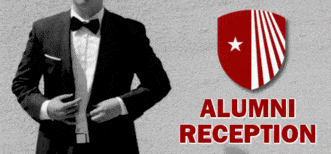 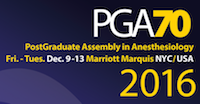 The Annual Stony Brook Anesthesiology Alumni Reception!
The Annual Stony Brook Anesthesiology Alumni Reception! Saturday December 10th 2016 (PGA Saturday) from 5 to 7 pm Venue: The Yale Club, NYC All Stony Brook Anesthesiology Faculty, Residents and Alumni are invited to attend. Please spread the word to the alumni you know! RSVP to the Alumni Committee by email or phone 631-444-2904 by November 28. 
|
|
The Annual Stony Brook Anesthesiology Holiday Party!
Friday, December 16th 2016 from 7 to 11 pm Venue: Villa Lombardi's All Stony Brook Anesthesiology Faculty, Residents, and Staff are invited to attend. RSVP to Mrs. Marisa Barone-Citrano by email by December 2nd. 
|
|
Michelle Hewett and her husband Dave, welcomed their new baby daughter, Peyton, on November 20. Big sister, Skylar, is delighted to have a sib!

|
|
Global Health Initiative
YouTube Video Chronicles Service Role of Stony Brook Medicine Volunteers on GHI to China
Francis S. Stellaccio, MD; Director of Cultural & Social Affairs, NPLD-GHI
The World Health Organizationʼs (WHO) global survey on maternal and perinatal health in its 2007– 08 REPORT detailed methods of delivery and pregnancy outcomes in Asia. The data showed that nearly half of all births in China were delivered by cesarean section. Since its first Global Health Initiative (GHI) to China in 2008, “No Pain Labor & Delivery (NPLD)” has been vigorously addressing this issue through education. Founded in 2006 by Ling Qun Hu, MD (Associate Professor of Anesthesiology at Northwestern University), the goal of NPLD-GHI has been to focus on reducing the unnecessarily high cesarean delivery rate and the extremely sparse utilization of neuraxial labor analgesia in China. NPLD-GHI assists local hospitals in the establishment of self-sustaining obstetric anesthesia systems that will allow provisions for safe and effective labor analgesia. The organization uses a multidisciplinary approach to achieve its goal of increasing the usage of epidural neuraxial labor analgesia in China by at least 10% through the establishment of 10 obstetric anesthesia training centers over a 10 year period (by 2018). Statistical data collected to date shows the NPLD-GHI hypothesis is correct, that is, the increased availability of labor analgesia would result in reduced requests for unnecessary cesarean delivery and better labor outcomes for mother and baby. 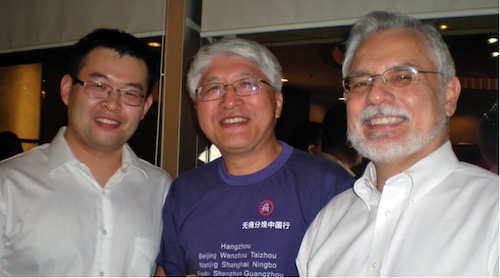
The video highlights the 2012 NPLD-GHI Shenzhen team, which includes Stony Brook Medicine volunteers Drs. Francis Stellaccio and Yuchen Liu (a Stony Brook medical student at the time, who is now an CA-1 in our department). Further details regarding the 2012 NPLD-GHI, as well as, trip reports for the 2011 and 2010 NPLD-GHIs to China can be found on our departmentʼs website in the Global Health Section. 
|
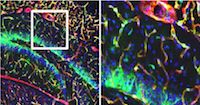

|
|
James P. Dilger, PhD
I scored a personal best with last month's campus photo by stumping the family of Dr. Deborah Richman! These seasoned explorers, particularly Biking Ben, frequently make SBU campus excursions. I have a feeling that they will stump me some day. By the way, the Piano Steps are at the entrance to Tabler Quad, across from Engineering Drive. The project of painting the steps was conceived by students and the painting was done by students.
This month's challenge is below. You may recognize the location depicted by the mural, but where is the mural? Hint: it is in the basement of a building. Good luck! 

|
|
Shivam Shodhan, MD
In observance and celebration of Diwali, the annual Hindu festival of lights, much of the NYC and Long Island community got together to put on a show with youth performances. Diwali Stony Brook began as an opportunity to provide our children with a platform to showcase their cultural talent, and further instill their cultural roots. The event has been established and organized by none other than our beloved Dr. Srinivas Pentyala!
This year marked the 9th year of the Diwali Stony Brook event. It was the largest thus far with over 150 kids performing! In fact, since its inception, more than 1200 kids have graced the stage and made the community feel proud of what they have accomplished. From the youngest child at three years of age to the graduating seniors, everyone did a marvelous job! 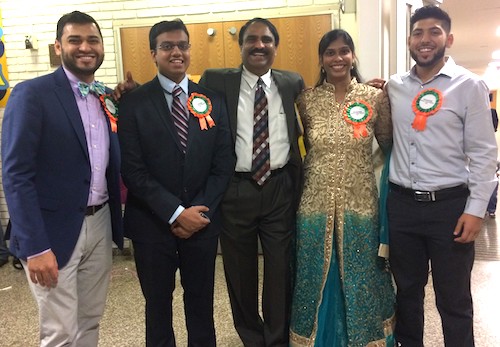 Shivam Shodhan, Vamiq Mustahsan, Srinivas Pentyala, Sahana Pentyala, Sunny Parmar Please check out the 2016 Diwali Stony Brook Website, Videos, Photos! 
|
|
SleepTalker, the Stony Brook Anesthesiology Newsletter is published by the Department of Anesthesiology
Stony Brook Medicine, Stony Brook, NY Tong Joo Gan, M.D., Chairman Editorial Board: James P. Dilger, Ph.D.; Stephen A. Vitkun, M.D., M.B.A., Ph.D.; Marisa Barone-Citrano, M.A.; Shivam Shodhan, M.D. |


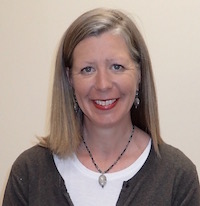


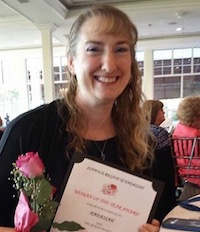 Dr. Ursula Landman was honored with the Woman of the Year award from Suffolk Hadassah on Thursday November 17th. She was chosen for her devoted service and contributions to the spirit and traditions of Hadassah. It was a beautiful day shared amongst amazing talented women from the Suffolk Hadassah Region.
Dr. Ursula Landman was honored with the Woman of the Year award from Suffolk Hadassah on Thursday November 17th. She was chosen for her devoted service and contributions to the spirit and traditions of Hadassah. It was a beautiful day shared amongst amazing talented women from the Suffolk Hadassah Region. On January 1, the Department of Anesthesiology, in conjunction with the Department of Surgery, will launch the "Enhanced Recovery After Surgery (ERAS) for Colorectal procedures" initiative at Stony Brook University Hospital. This is a multidisciplinary program that brings together physicians, nurses, pharmacists, and nutritionists to provide a seamless perioperative experience aimed at best practices to promote rapid recovery and quicker return of baseline function while minimizing complications.
On January 1, the Department of Anesthesiology, in conjunction with the Department of Surgery, will launch the "Enhanced Recovery After Surgery (ERAS) for Colorectal procedures" initiative at Stony Brook University Hospital. This is a multidisciplinary program that brings together physicians, nurses, pharmacists, and nutritionists to provide a seamless perioperative experience aimed at best practices to promote rapid recovery and quicker return of baseline function while minimizing complications. 